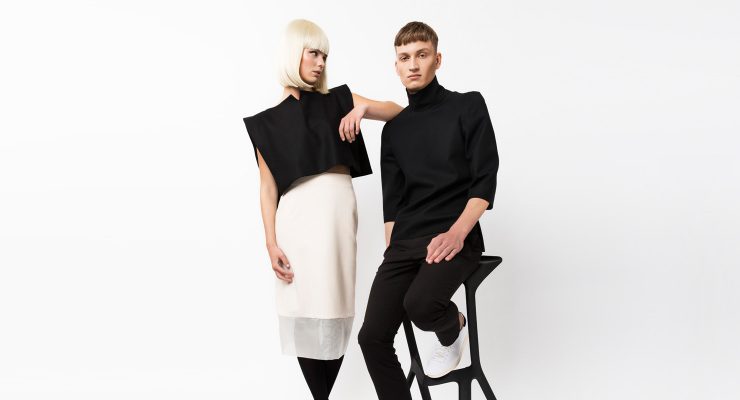
A photo from Scandinavian Embassy’s new collection. (Photo by Marthe Hennink.)
Remember when it was a mortal sin to walk into a clothing store carrying a drink? When only the rule breakers among of us would dare to browse immaculate merchandise while holding a lidded paper cup, that arm kept as low and unsuspiciously untaut as possible?
In today’s many-faceted retail landscape, it’s passé to assume that shoppers are single-taskers who become klutzes with a coffee in hand. In fact, drinkable and wearable commerce are meeting at the register more and more. And now that the Polo Ralph Lauren store on Fifth Avenue in Manhattan has its own coffee shop, we can trust that what was once a radical retail idea has become de rigueur.
Meanwhile back in Old Amsterdam, Sprudge visited four businesses where specialty coffee is sold side by side with apparel and where patrons are treated not as imminent stain-makers, but as ambidextrous consumers of good taste. This style of mixed retail is all the rage right now in Amsterdam, from the Jordaan to De Pijp. It’s just one part of why this city’s coffee scene is so exciting in 2016.
Cottoncake
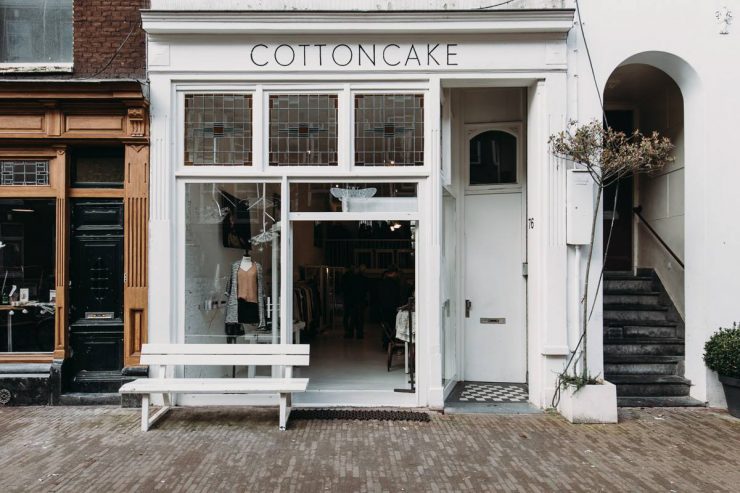
Friends Jorinde Westhoff and Tessa van Herwijnen opened their business in February 2012, which then was, as they acknowledge, “pretty pioneering” in the evolution of the clothier-cafe hybrid.
Its name may evoke Marie Antoinette, but Cottoncake’s offerings would be far better received chez Gwyneth Paltrow than at Versailles. Brands like Samsøe & Samsøe and Second Female are staples, their Danish designers having perfected the consciously crafted look of windswept whimsy characterizing women’s wear in the 2010s. Products like By1oak’s capriciously mismatched earrings come from as near as Amsterdam East or, like the rocker-chick basics of OneTeaspoon, as far as Australia.
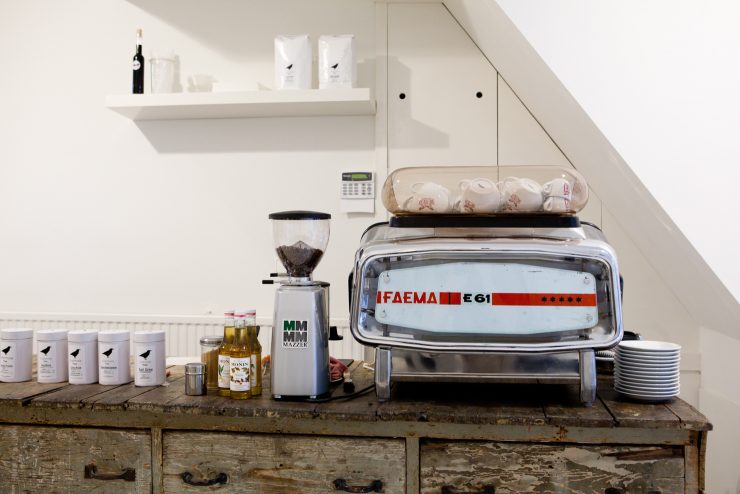
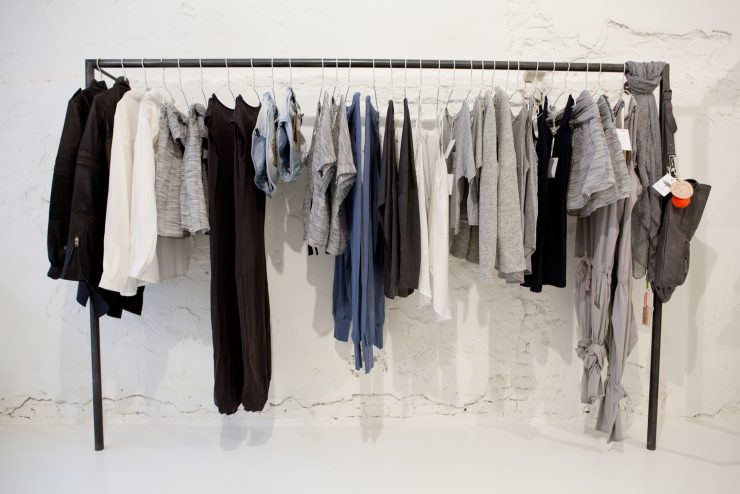
Westhoff, who first worked as a barista at Amsterdam’s Two for Joy, oversees the food and drink program, with coffee supplied by White Label Coffee, one of the city’s best roasters. Those coffees are ground on a Mazzer Mini and espressos are pulled on a two-group Faema E61, a restored original from 1961. A cupping with the roaster allowed Cottoncake to customize a blend of Brazilian coffee with African touches “so it’s a little bit fruity.” The menu mixes Westhoff’s own healthy recipes—Dutch Vogue praised her smoothie breakfast bowl—and inspirations from abroad, for example, the flourless chocolate cakes she sampled while studying in Melbourne. Everything is made in a kitchen below the lofted dining area, which, in turn, tempts customers with its aerial view of the apparel.
“It also happens a lot that people have a coffee here and go home with a pair of shoes and say: ‘Shit, that was a very expensive cup of coffee!’” laughs Westhoff. “But that’s, of course, the idea.”
Photos provided by Cottoncake.
Cottoncake is located at Eerste van der Helststraat 76. Visit their official website and follow them on Facebook and Instagram.
Scandinavian Embassy
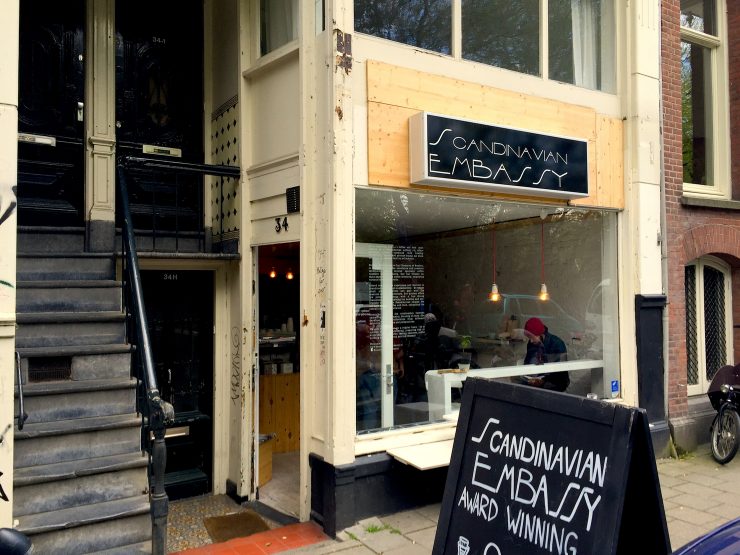
Regular Sprudge readers need no introduction to the cafe where chef Rikard Andersson and brew savant Nicolas Castagno make food and coffee’s love affair seem destined. They’re less likely, though, to know Scandinavian Embassy’s third partner. Meet Dominika Budny, a trained econometrician who, when not at her full-time job at a Dutch financial institution, is working on SE: wardrobe.
The clothing line first appeared late last year, yielding a collection that Embassy staff modeled while working at the London Coffee Festival this past spring. But “the idea was there from the beginning,” says Budny, who is married to Andersson. The team at Scandinavian Embassy have long planned to integrate Budny’s fashion interest in the business, but making this work is incredibly time-consuming. That’s why the line is debuting now in 2016—just in case you’ve grown bored of Andersson & Castagno’s daring pairings (you haven’t).
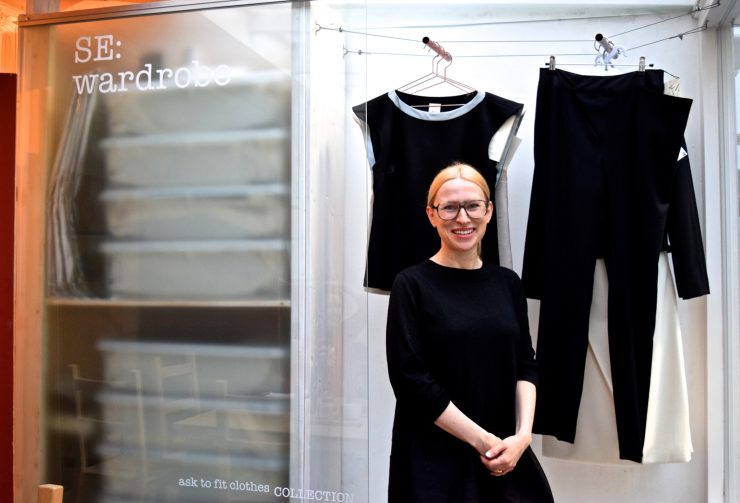
Like much of what the Embassy does, the designs are “Scandinavia-inspired,” as Budny, originally from Poland, puts it. The latest collection, available this coming fall, is called “Stone.” Made of natural fibers, the boxy and ovular shapes in black and white with touches of rose evoke something like classic Armani and present-day COS taking Grace Jones out to lunch. Besides a top and pair of trousers, all the pieces are women’s wear. All the garments are made in the Netherlands, with each item produced in a series of approximately 15.
SE: wardrobe’s main sales channel is expected to be online, though the cafe itself will continue to offer a space for display. “It’s always good when people can come and touch and see what it really is,” says Budny.
Scandinavian Embassy is located at Sarphatipark 34. Visit their official website and follow them on Facebook and SE: wardrobe on Instagram.
Koko Coffee & Design
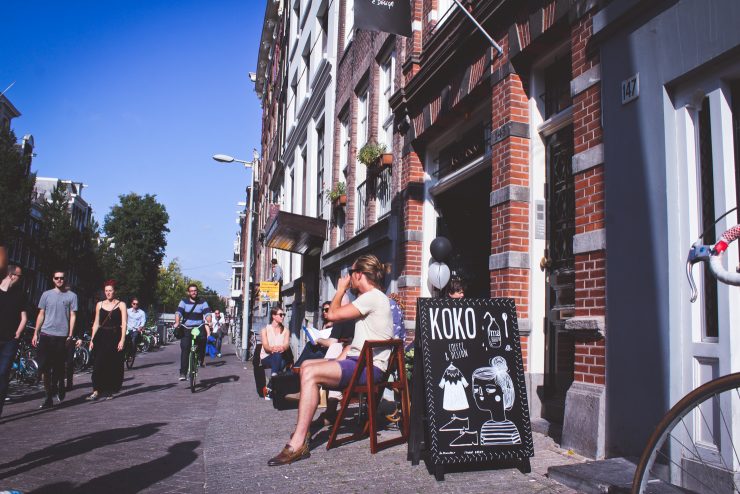
While Koko Coffee & Design’s compass may not always point to Antwerp, the city serves as this clothier-cafe’s proverbial North. For starters, the coffee comes from the Flemish capital’s treasured roaster, Caffènation. Plus, co-owners Caroline Kruijssen and Karlijn Timmermans met years ago while working at Cobra, the legendary boutique credited for its early adoption of Antwerp designers and decades of getting them into Dutch closets.
Today brands, such as Libertine Libertine and Wood Wood, among the other Great Danes of contemporary men’s and women’s wear, represent consistently at Koko. “You could say the store is really Scandinavian-based, but we also love the Dutch designers,” notes Kruijssen. Although she tends to oversee the business division dealing with LBDs (little black dresses), and Timmermans, the other LBDs (little black drinks), the two friends decide everything together. Kruijssen describes how at Copenhagen Fashion Week, their preliminary buying selections, made blindly, tend to mirror one another. “Most of the time we pick exactly the same items,” she smiles.

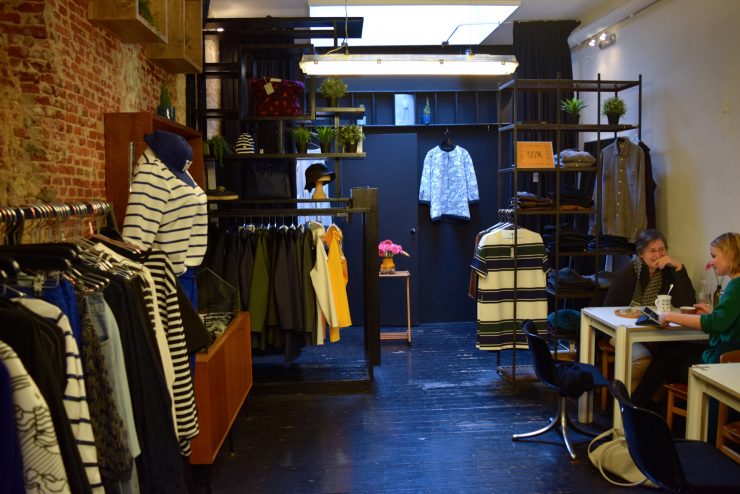
Previously praised by Sprudge for impeccable cafe service, the staff are equally nurturing towards clients in need of outfitting help—whether a woman has qualms about revisiting Tevas or a guy is simply less practiced in apparel acquisition. These days, menswear now comprises about 40% of Koko’s stock, double what the shop began with when opening in September 2012.
“The thing with men is that they come here more often for a coffee, and that’s good, because if a man feels comfortable having a coffee, then he’ll have a look [around],” explains Kruijssen. In her experience, when males like a product, they repeat-buy it. “That’s the thing with men, they’re really very faithful.”
Additional photos provided by Koko Coffee & Design.
Koko Coffee & Design is located at Oudezijds Achterburgwal 145. Visit their official website and follow them on Facebook, Twitter, and Instagram.
Lot Sixty One
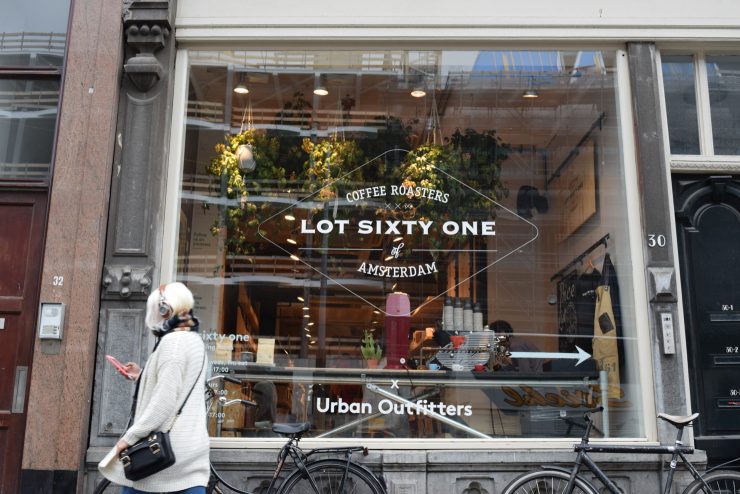
Compared to its headquarters in Amsterdam West, this Lot Sixty One Coffee Roasters outpost is small. Consider, however, its location: in the throbbing thistle of the city’s tourism, halfway between Madame Tussauds and the Amsterdam Dungeon—and inside an Urban Outfitters.
Established in 2013 by the same Australian duo behind Culture Espresso in Manhattan, Lot Sixty One is among the Netherlands’ top specialty roasters. Besides supplying restaurants and cafes across the nation, co-founders Adam Craig and Paul Jenner conveniently provide Amsterdam with an in situ model of Antipodean coffee professionalism.
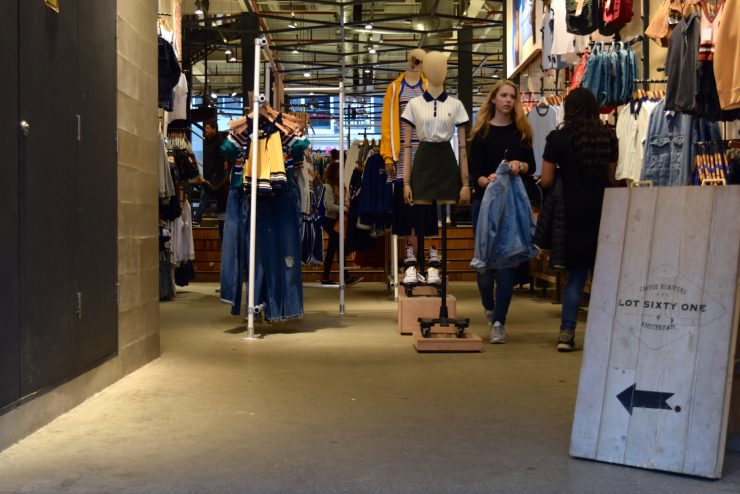
Craig appreciates the opportunity for collaboration with Urban Outfitters, noting that it lets his company “do things a little bit more off the cuff, that we wouldn’t necessarily be able to do in the [flagship] store in the Kinkerstraat.” On weekdays, customers have the pleasure of meeting Nathan, a personable barista from Manchester whose pitcher tossing skills attest to his past as a bartender with flair. The Englishman is just as happy to pull double ristrettos of a natural light-roasted Brazilian espresso for his regulars, often workers from surrounding buildings, as he is to give impromptu tutorials on filter prep methods to out-of-town shoppers.
This is not the first time the multinational corporation—URBN on NASDAQ—has partnered with indie coffee. That the Amsterdam bar is flushed against the storefront window, however, begets a question or two. Can the curb appeal of a Kees van der Westen Mirage duette help sell ready-to-wear skinny jeans and ironic Ts? Is specialty coffee now playing the erstwhile role of Abercrombie’s shirtless torsos?
Lot Sixty One in Urban Outfitters is located at Kalverstraat 31-33. Visit their official website and follow them on Facebook, Twitter, and Instagram.
Karina Hof is a Sprudge staff writer based in Amsterdam. Read more Karina Hof on Sprudge.
The post Coffee & Fashion In Amsterdam: A Shopper’s Guide appeared first on Sprudge.

